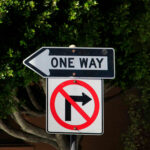West 12th Street, nestled in the heart of Greenwich Village, Manhattan, is a captivating blend of history, culture, and architectural beauty. This quintessential New York City street offers a journey through time, showcasing everything from avant-garde art to prestigious educational institutions and unique cultural hubs. A stroll down West 12th Street reveals layers of the city’s rich tapestry, making it a must-explore destination for anyone seeking the true spirit of the Village.
One of the street’s most significant landmarks is the New School, located on West 12th Street. This institution, known for its progressive and intellectual atmosphere, houses a hidden gem: a powerful four-wall fresco by the renowned Mexican muralist José Clement Orozco. Created between 1930 and 1931, this earth-toned masterpiece in a meeting hall serves as a vibrant tribute to workers worldwide. Although it requires restoration and is not always accessible to the public, the fresco represents the school’s commitment to social commentary and artistic expression. The New School has long been a center for intellectual discourse, having hosted influential figures like literary scholar Elbert Lenrow and the philosopher Sidney Hook, who inspired students with their night courses in the mid-20th century. Even in recent times, the New School continues to foster open dialogue, exemplified by its welcoming of speakers from across the political spectrum, demonstrating a commitment to free speech that would likely resonate with its founders.
Architectural enthusiasts will find West 12th Street a visual delight, particularly the north side, which is lined with handsome apartment buildings each telling its own story. No. 59 stands as a testament to classic design, crafted by the esteemed architect Emory Roth and developed by Bing & Bing in 1931. Further down, Butterfield House at No. 37, erected in 1962, is celebrated as one of Greenwich Village’s most desirable residential addresses, embodying mid-century modern elegance. In contrast, The Ardea at 31-33, designed by John B. Snook & Sons and built between 1895 and 1901, presents a fortress-like presence, showcasing late 19th-century architectural grandeur. Keen observers will notice the intriguing angular protrusion at No. 45, a remnant of an original wall ingeniously slanted to offer residents a view of the now-vanished Minetta Brook. The curiously halved appearance of No. 35 is no accident; it was literally bisected in 1893, adding a unique chapter to its history. And at No. 19, an elegant 19th-century townhouse whispers tales of former residents, including the acclaimed actress Meryl Streep.
Beyond its architectural allure, West 12th Street is a haven for cultural experiences. S. F. Vanni bookstore at No. 30 is a city treasure, an idiosyncratic Italian-language bookstore operating for over 65 years. Its operating hours may be flexible, and its seemingly disheveled appearance might suggest closure, but within its walls lies a rich collection of Italian literature, from obscure encyclopedias to popular novels, cookbooks, and dictionaries, waiting to be discovered. Just a short walk east, New York University’s Casa Italiana Zerilli-Marimò at No. 24 serves as a vibrant center for Italian culture. Housed in a suave mid-19th-century mansion, it hosts a diverse array of Italian-themed cultural events, including concerts, art exhibitions, films, and lectures, many held in its elegant downstairs auditorium, enriching the cultural landscape of West 12th Street and the wider city.
For families, West 12th Street also holds educational significance. The First Presbyterian Church, located nearby, extends its community outreach to West 12th Street through its Church House at No. 12, which houses a nursery school. Designed by Edgar Tafel in 1960, the chocolate-brown brick building with Gothic Revival quatrefoils provides a modern yet harmonious counterpoint to the stately 19th-century church constructed from ashlar stone. Historically, the church played a significant role in theological discussions, with its liberal pastor from 1918 to 1924, Rev. Harry Emerson Fosdick, delivering his famous and still relevant sermon in 1922, “Shall the Fundamentalists Win?”, reflecting the progressive spirit often associated with the area around West 12th Street.
In conclusion, West 12th Street is more than just another street in New York City; it is a vibrant artery pulsating with history, culture, and architectural significance. From the intellectual haven of the New School to the architectural gems lining its sidewalks, the cultural richness of S.F. Vanni and Casa Italiana, and the community-focused First Presbyterian Church, West 12th Street encapsulates the diverse and captivating spirit of Greenwich Village, inviting exploration and discovery at every turn.

